Music Academy of the West Partners with London Symphony Orchestra
Multi-Year Project Produces Concerts to Celebrate Music Academy’s 75th Anniversary
By Charles Donelan | March 24, 2022
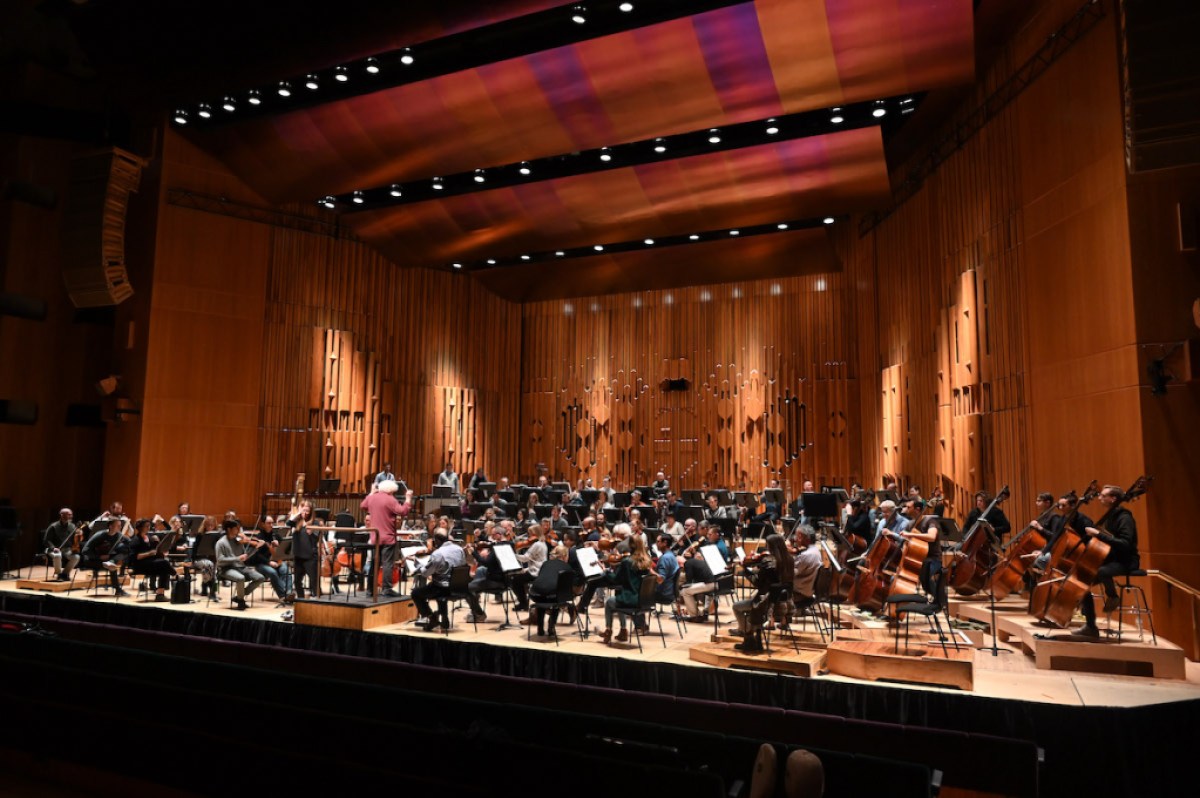
The Music Academy of the West turns 75 in 2022, and this week, a series of three concerts at The Granada Theatre featuring the London Symphony Orchestra will jump-start their anniversary celebration. Four years in the making, these concerts are the result of a massive operation involving three distinct groups: the London Symphony Orchestra; the Music Academy’s Keston MAX All-Stars; and the choristers of Sing!, the Academy’s new program for elementary students in Santa Barbara, Carpinteria, and Goleta schools.
The Thursday, March 24, program focuses on the London Symphony Orchestra (LSO) as a touring unit and is co-sponsored by CAMA. Following other recent appearances at Stanford, Berkeley, and in Costa Mesa, Sir Simon Rattle will lead the group in an ambitious program that includes the Symphony No. 7 of Jean Sibelius, Bartók’s Miraculous Mandarin, Ravel’s La Valse, and The Spark Catchers, a composition by Black British composer Hannah Kendall that Rattle calls a “real firecracker.” This one is sure to attract all the classical fans, as there is no better orchestra anywhere right now, especially for this music.
On Saturday afternoon, the Academy invites families to join the LSO for How to Build an Orchestra, a concert with audience singalong featuring Rattle and LSO Discovery presenter/animator Rachel Leach. Dozens of elementary school children will be there representing Sing! The choristers will perform songs they have learned in advance in order to experience what it is like to sing with an orchestra.
Sunday brings the Music Academy’s Keston MAX All-Stars on stage alongside the LSO. Chosen for their excellence in the Academy’s summer programs over multiple years, this group of fellows became apprentices to mentor musicians in the LSO. Depending on what year they earned the honor, they either spent time in London playing and rehearsing with the orchestra or will come to London later in 2022 to undertake their exchanges, which were postponed due to COVID.
The three sections that follow will give you an idea of what each of these three events has to offer and provide context about the goals of the Music Academy and the London Symphony.
The London Symphony Orchestra
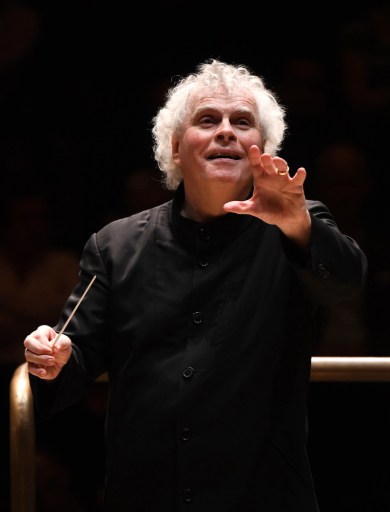
Presented by the Music Academy of the West and CAMA.
At the Granada on Thursday, March 24, at 7:30 p.m.
Touring has been an integral part of the London Symphony’s mission since it began in 1904. The group’s first tours were train trips to the provinces in 1905, led by Sir Edward Elgar. Today, in addition to its residency at London’s Barbican Center, the LSO plays the world’s most distinguished concert halls regularly. Following this North American trip, which concludes with Sunday’s event at the Granada, the orchestra will rest for just one week before performing in London, then heading out again to a series of concerts in Germany with their Principal Guest Conductor François-Xavier Roth.
The Music Academy’s collaboration with the London Symphony builds on Simon Rattle’s impact since he started as the LSO music director in 2017. Before that, Rattle served 16 years as chief conductor of the Berlin Philharmonic. His proven ability to lead an elite orchestra and his expertise across a broad range of repertoire made Rattle an ideal candidate for the LSO position, and he’s taken advantage of the opportunity to produce some extraordinary music.
The LSO will release a live recording from Rattle’s 2017 debut season at the Barbican on Friday, March 25, featuring three Stravinsky ballets. This thrilling concert put The Firebird, Petrushka, and The Rite of Spring together on the same program. There’s a great video of the Rite of Spring performance on YouTube.
When I spoke with Rattle by phone in February, he described the gratitude that he and the performers have experienced as a result of appearing in front of packed audiences again: “The first time we saw a full audience sitting next to each other was in Aix-en-Provence at the end of the summer. Somehow we hadn’t realized it would be full — that people would no longer be socially distanced. And many of us started weeping. It was the feeling that, ‘Oh my God, yes, this is what we do!’ Yes, and you will never again take even one note for granted.”
This epiphany in Provence has its corollary here in Santa Barbara, where the return to live performance has been a joyous revelation. No introduction to these three concerts would be complete without recognizing the critical role that the Granada has played in reviving the performing arts in the wake of the worst of the pandemic. Whether we’re talking about Kismet, Opera Santa Barbara’s Cruzar la Cara de la Luna, or appearances by the Los Angeles Philharmonic, Roxane Gay, the Santa Barbara Symphony, and State Street Ballet (SSB), the Granada has made it all possible. The rapturous responses of audiences to such recent triumphs as SSB’s Sleeping Beauty and the S.B. Symphony’s “Sonic Boom” concert testify to one thing: The Granada is essential to the cultural life of our city.
The London Symphony’s How to Build an Orchestra Family Concert

Conducted by Sir Simon Rattle and featuring Rachel Leach.
At the Granada on Saturday, March 26, 4-5 p.m.
This one-hour family concert comes from the London Symphony’s Discovery program and is suitable for children ages 7-12. In addition to music by Prokofiev, Mozart, Copland, and Beethoven, there will be explanations of the various instruments that make up an orchestra and opportunities for audience participation.
The How to Build an Orchestra concert marks a milestone in developing the Music Academy’s new choral program, Sing! Located within the public elementary schools of Santa Barbara, Carpinteria, and Goleta, Sing!, which began in 2018, offers free choral instruction to all students in the region as an afterschool program. Sing! students have copies of the LSO’s book How to Build an Orchestra, and 100 of them will be present at the Granada on Saturday to sing as part of the concert.
Music Academy President and CEO Scott Reed describes the motivation for a new partnership with the Young People’s Chorus (YPC) of New York City in 2021 as in part a result of the holistic program reevaluations that took place during the pandemic. “We started thinking about how we wanted to go back into the schools after the period of working virtually, and we thought it was important that it reflect the changes taking place in the world.” Through Jamie Broumas, the Academy’s chief artistic officer, the administration and the board of the Music Academy met Francisco Núñez, the visionary leader of the YPC.
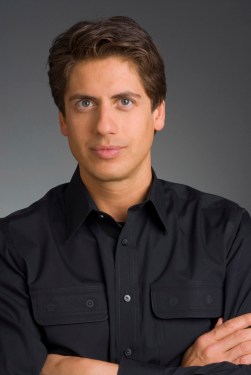
Núñez, a 2011 MacArthur Fellow and Music America’s 2018 Educator of the Year, came to Santa Barbara in December 2021 to assist in the transformation of Sing! into a YPC-informed program that took place this season. Throughout, the team led by program director Erin McKibben and choral directors Christine Hollinger and Marta Hovhannisyan has delivered choral training every week to students from 33 different schools at six locations in Santa Barbara County.
The YPC approach to choral training derives from Núñez’s lived experience as the child of immigrant parents from Haiti and the Dominican Republic growing up in New York City. After his father died, his mother cleaned houses to support the family. To give young Francisco something to keep his mind off of what was happening in the streets, his mom bought a used piano from the Salvation Army and exchanged cleaning services for piano lessons for her son.
Núñez thrived as a music student and earned a scholarship to New York University. All along the way, in addition to his piano performance studies, Francisco sustained an entrepreneurial spirit that led him to a high-ranking position at the New York Children’s Aid Society when he was still in his twenties. Faced with the challenge of providing meaningful services to as many as 100,000 schoolchildren, Núñez developed the choir that would eventually become the Young People’s Choir of New York City.
From these humble beginnings, this underdog organization grew into a sophisticated international program that helps thousands of young singers travel, compete, and perform worldwide. In addition to composing his own choral works specifically for children’s choirs, Núñez has commissioned several hundred works suited to these treble voices from some of the top composers in the world. His understanding of developing singers and his dedication to putting young people side by side in choirs made Núñez a compelling partner for the Music Academy.
Reed sees the YPC approach as an especially exciting way of activating the whole Santa Barbara community through music. “We had been looking for years at how best to contribute to Santa Barbara,” he told me, “and this is what we found: taking kids from all different backgrounds and putting them next to each other with the idea of blending their voices. I love it — it’s profound.”
In addition to providing these students with after-school choirs to sing in, Reed and the Academy’s staff felt it was essential to include the Sing! kids in the residency with the London Symphony. As Reed puts it, “[Sing!] is a program that has to integrate with everything else that we’re doing. It has to evolve with everything else, and it has to leverage everything else.”
After they sing with the London Symphony at the family concert on Saturday, these students will have a chance to meet other young musicians this summer when YPC comes to Montecito as part of the Music Academy’s summer program. YPC Lab is a workshop that invites young singers from New York and other countries to participate on location in group rehearsals and concerts. Thanks to its ongoing relationship with Westmont College, the Music Academy can host one of these labs this summer. Stay tuned for more information about that program in the coming months.
The Music Academy of the West 75th Anniversary Community Concert
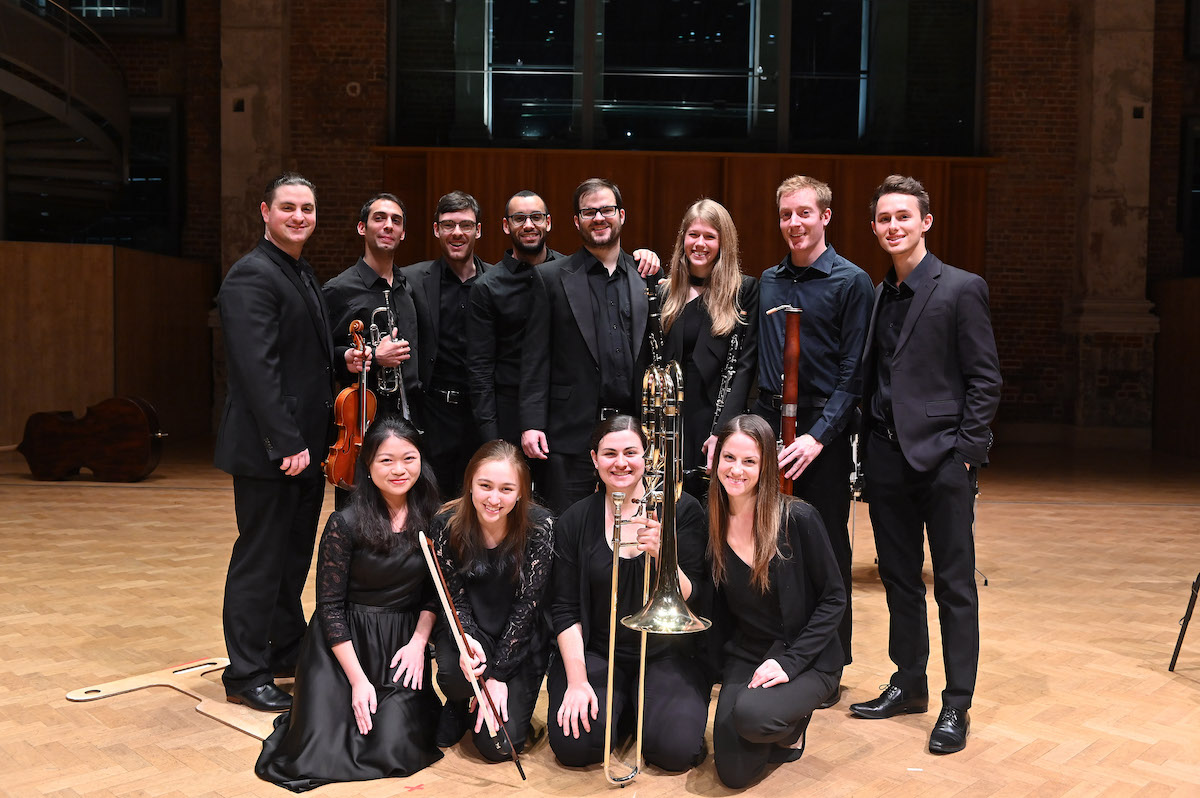
Featuring the London Symphony Orchestra and the MAW’s Keston MAX All-Stars.
At the Granada Sunday, March 27, at 7 p.m.
No single event expresses the ambition and scope of the Music Academy’s mission more fully than Sunday’s Community Concert. Take approximately 100 members of the London Symphony Orchestra, add 36 of the best students from the Music Academy’s summer programs, and put them all on stage in front of Sir Simon Rattle. You know something exciting will happen. Since its inception in 2014, the apprenticeship model offered to certain high-achieving fellows through these orchestra partnerships has represented the artistic ideal of the organization. The Music Academy’s mission to train the best and most well-rounded musicians of the 21st century comes to a mini-crescendo every time one of these All-Stars connects with a principal musician at a great orchestra.
In trying to imagine what it takes to organize and execute such a massive undertaking, I turned to Indigo Fischer, the flutist who holds the position of Artistic Operations Coordinator at the MAW. Fischer pulls the strings and parses the data in motion, making the whole giant operation possible. Using an advanced software suite called ArtsVision, which is specifically designed for symphony orchestras, opera companies, and music schools, she schedules everything from the first rehearsal to retrieving the last auxiliary instruments after the big concert.
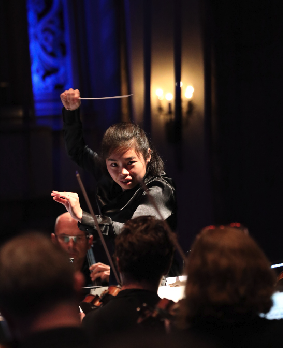
VOYAGER: Elim Chan conducting the London Symphony at the Granada in 2019. | Credit: Phill Channing
According to Fischer, what’s happening behind the scenes this week makes everything audiences see and hear possible. Initial rehearsals called “sectionals” bring the Keston MAX All-Stars into one-on-one coaching with their LSO mentors. Fischer told me that this is where the musicians learn about “the nitty-gritty details that they otherwise would not be able to address in a full orchestra rehearsal.”
The orchestra will then gradually assemble into larger groups until the conductor’s final dress rehearsal. Fischer coordinates everything from obtaining the auxiliary instruments for double bass players who are flying in from the East Coast and don’t want to bring their own to making sure that the kids from Sing! know when their parents need to get them to the Granada. She said that what she loves most about her work is the feeling that comes when the public musical performance finally begins. “If you’re doing your job right, no one will know what went into it during the performance. It all serves the music-making. We’re all in it for the ultimate creation of art.”
Contemplating the sheer size of Sunday’s event, with nearly 140 musicians scheduled to take the stage together, Fischer acknowledged another profoundly important aspect of the work: keeping everyone safe and healthy. “It has been wonderful that we’ve been able to be safe about it throughout the pandemic,” she said. “That’s been a whole other layer of details that have had to be factored in, the COVID protocols that make sure that the musicians can be safe to make this music happen.”
There are still a small number of tickets available for Sunday’s community concert, and they are all just $10. To purchase tickets to any of these events, go to
granadasb.com.




You must be logged in to post a comment.